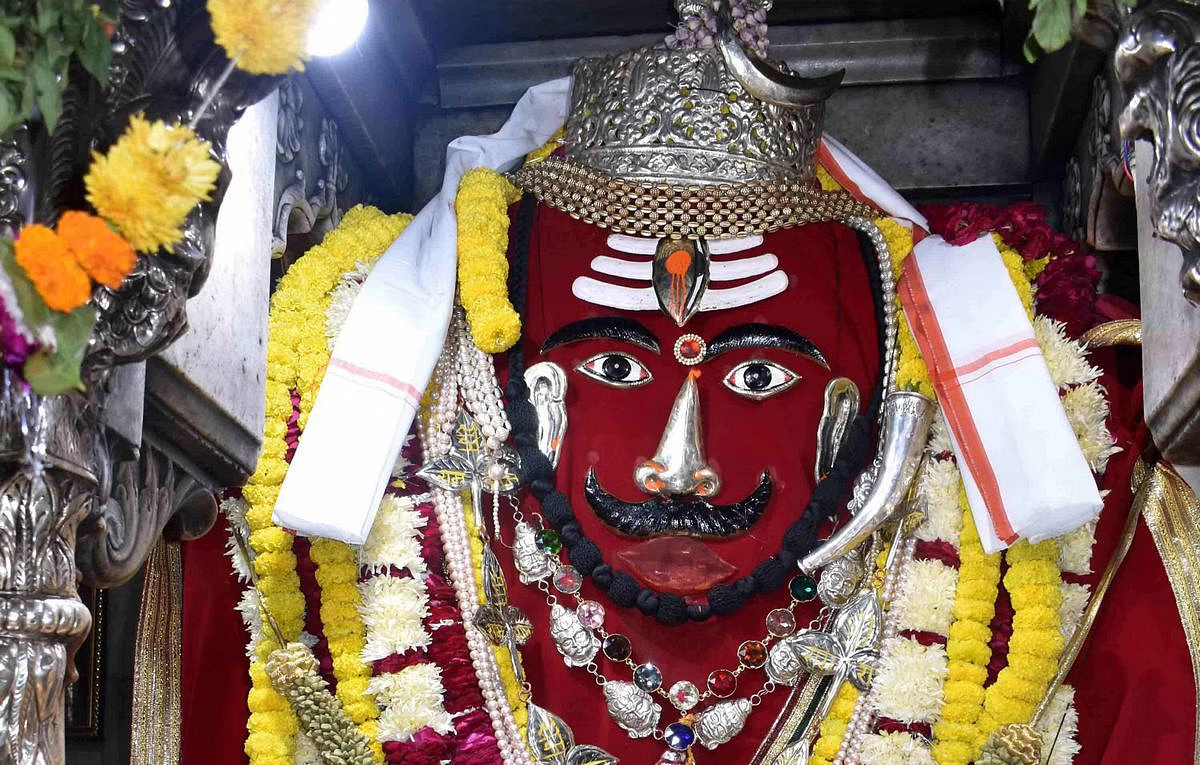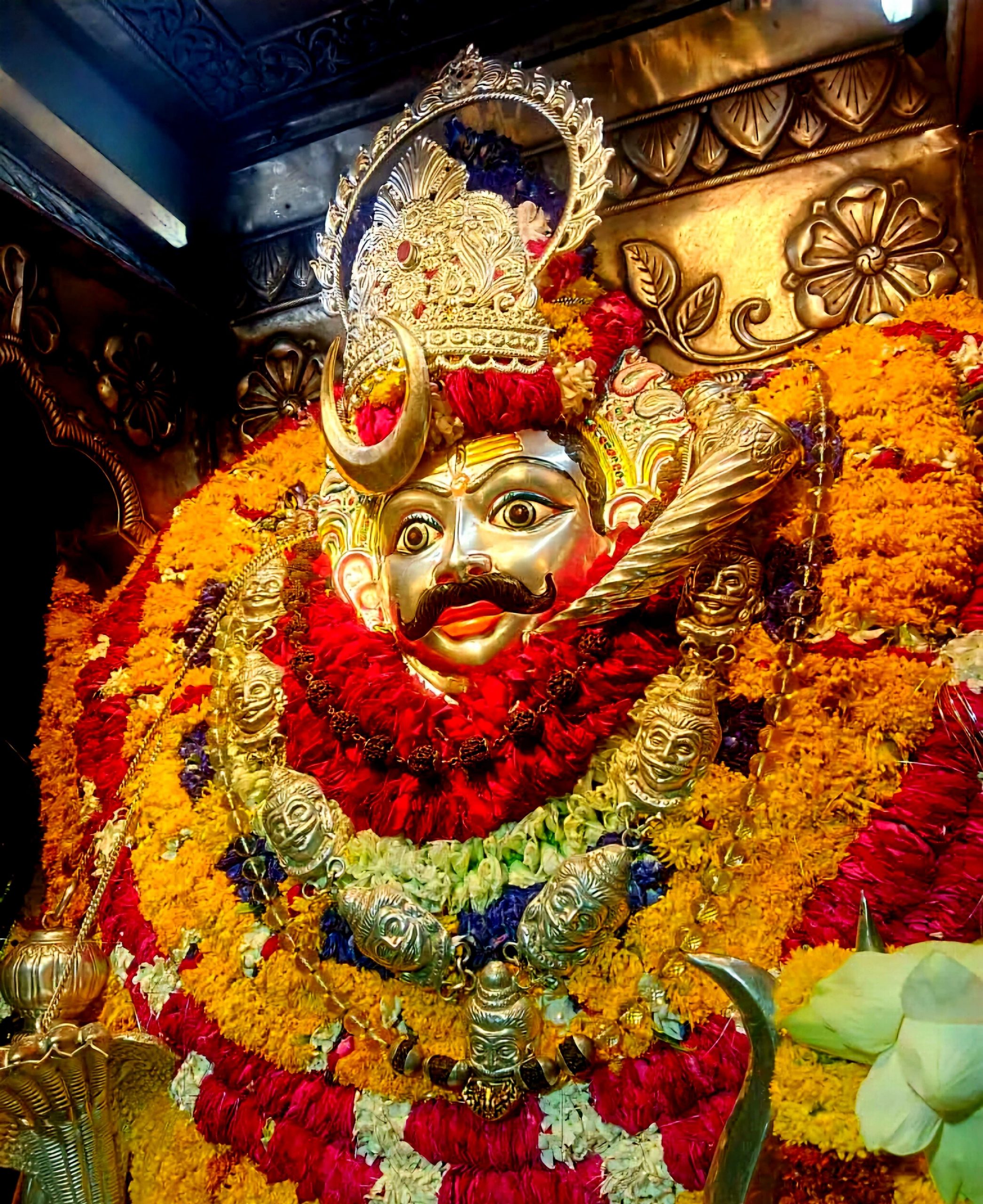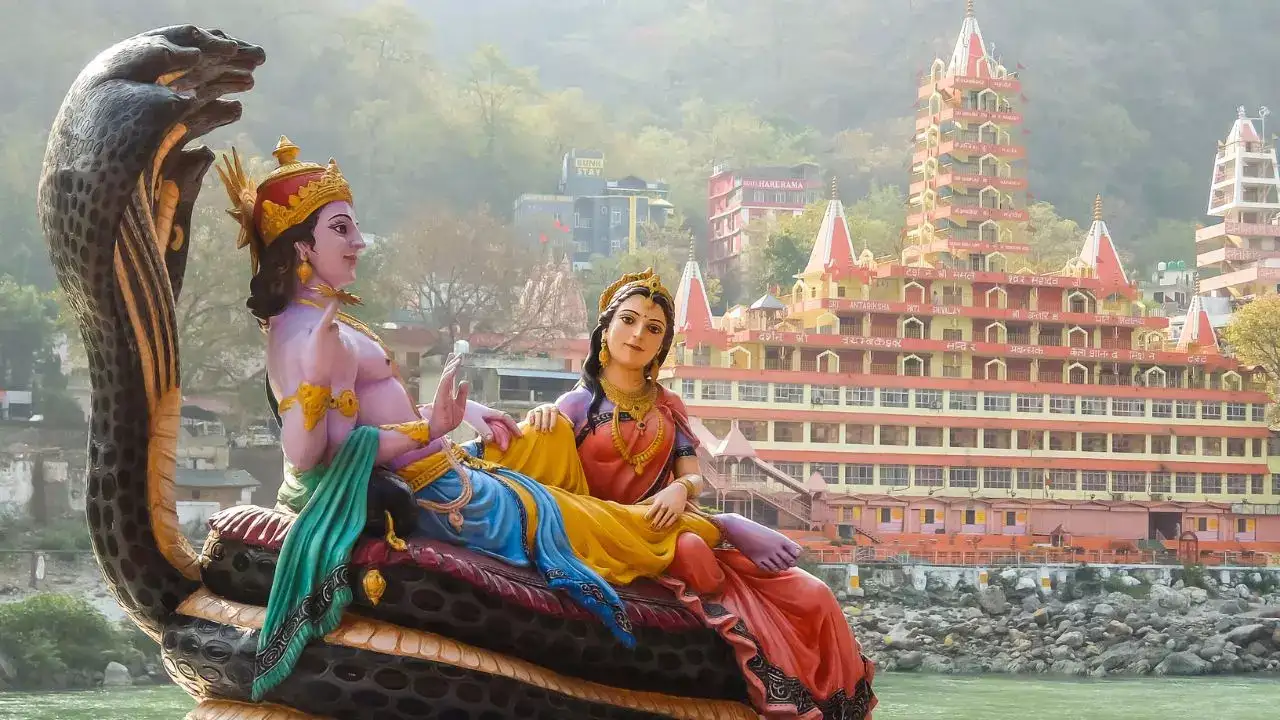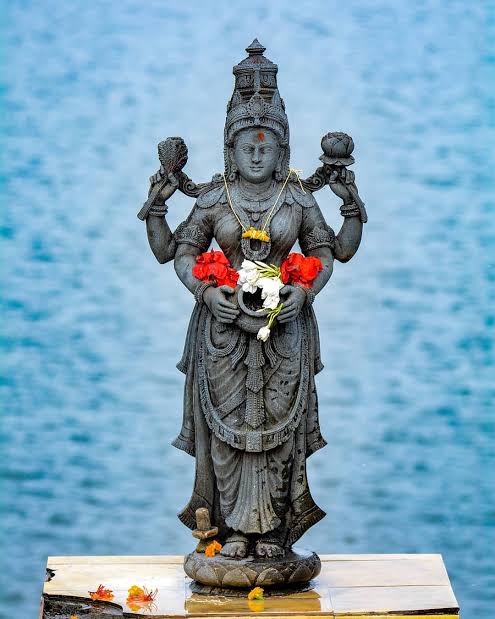Kalashtami – Monthly Veneration of Lord Kal Bhairav
Kalashtami is a potent monthly festival honoring Lord Kal Bhairav, the fierce, time-bestowing manifestation of Lord Shiva. Observed on Krishna‑paksha (waning moon) Ashtami, it centers around combating darkness within, removing obstacles, and seeking spiritual liberation through devotion and ritual.
Each lunar month on the eighth lunar day, devotees observe Kalashtami by fasting, performing special pujas, and offering heartfelt prayers to Lord Kal Bhairav. This monthly observance differs from Kalabhairav Jayanti (Bhairava Ashtami), which marks the specific manifestation of Kal Bhairav in Margashirsha/Kartik. Whether it is a minor monthly fast or the important annual Bhairava Jayanti, both celebrate Kaal’s power to dispel ignorance, ego, and fear of death.
Deity Associated:
Kal Bhairav emerges from Lord Shiva’s wrath, tasked to punish arrogance, most famously by severing Brahma’s head. He is known as Dandapāni (“Bearer of the staff”), guardian of time, and protector in Kashi/Varanasi and Ujjain. His vāhana (vehicle) is a dog symbolizing loyalty and vigilance.

“On Kalashtami, the fierce roar of Kal Bhairav silences ego and awakens the soul.”
Origin, Significance & Vedic-Astrological Relevance
In the sacred realm of Hindu cosmology, the story of Kal Bhairav is both fierce and profound – a tale born not from external battlefields but from the internal struggle between ego and divinity.
Long ago, during a great cosmic discussion among the Trimurti : Brahma, Vishnu, and Shiva – Brahma, the Creator, allowed pride to cloud his wisdom. He claimed superiority over all creation, dismissing Shiva’s role in the divine trinity. His arrogance knew no bounds when he declared himself the ultimate God and even sprouted a fifth head, an act symbolic of uncontrolled ego.
Lord Shiva, the Supreme Yogi and the embodiment of dispassion and cosmic justice, chose not to engage in argument. Instead, from his blazing third eye emerged a dark, terrifying form – Kal Bhairav. His body radiated energy like thousands of suns, his eyes glowed with fury, and he held a trident and a skull-topped staff. Kal Bhairav, the Lord of Time, was not born for war, but for correction.
With a single motion, Bhairav decapitated Brahma’s fifth head – the seat of his ego. Yet in doing so, he incurred the sin of Brahmahatya – killing a Brahmin, one of the gravest sins in Vedic dharma. The skull of Brahma’s fifth head, now stuck to his hand, refused to fall. Bhairav became a wandering mendicant, traversing realms and timelines, bearing the skull like a cursed reminder.
He roamed naked, smeared in ash, across mountains and rivers. His path of atonement ended only when he reached the sacred city of Varanasi (Kashi), the city where time halts, and karma dissolves. The moment he stepped into Kashi, the skull fell from his hand, and he was released from the sin. From that day, Kal Bhairav was appointed the Kshetrapalaka – the eternal guardian of Varanasi. No one can enter the city of Kashi without his permission, and even Lord Shiva himself roams under Bhairav’s watch.
This story signifies that ego is the greatest sin, and only through surrender and spiritual atonement can liberation be achieved. Kal Bhairav is not merely a punisher; he is a guide, a liberator, and a guardian of dharma.
Spiritual Significance
Kalashtami, observed on the eighth day of the waning moon, represents the darkening phase, a time when the inner shadows rise, but also a moment of opportunity to cleanse them. Worshipping Kal Bhairav on this day is like invoking a cosmic mirror, where one sees all the hidden fears, suppressed ego, and unconscious patterns.
Bhairav doesn’t sugarcoat. His energy is raw, direct, and immediate. On Kalashtami, his devotees fast, not just to purify the body, but to burn inner karmas. His worship is intense and demands courage. It is believed that any sadhana (spiritual practice) undertaken on Kalashtami, especially under Bhairav’s energy, yields quicker and transformative results.
He is also the master of the eight Bhairavas, who each control a direction of the universe. These Ashta Bhairavas govern aspects like time, death, destruction, knowledge, and transformation. Kal Bhairav is their chief, the Bhairavacharya.
Vedic-Astrological Relevance
In Vedic astrology, Kal Bhairav is closely associated with Shani (Saturn) and Rahu – the karmic taskmasters. Just as Saturn teaches through trials, Bhairav teaches through confronting one’s shadow. People suffering from Shani Dasha, Rahu Mahadasha, or afflicted 8th house (associated with sudden changes, death, and transformation) are advised to observe Kalashtami.
He is also known to protect one from untimely death (akaala mrityu). Hence, his worship is critical for those facing life-threatening diseases, accidents, or mental health crises. His energy is grounding and piercing – it breaks delusion.
In Tantra, Bhairav is the ultimate Guru. He is considered the gatekeeper to higher wisdom, and no tantric path is complete without his guidance. Bhairav also rules over time (Kala) and space (Desha). That is why his name – Kal Bhairav, literally means “The Terrifying One Who Rules Over Time.”
His very presence is a reminder that everything in life – our bodies, relationships, emotions – is perishable. Only the Atma (soul) is eternal. And Bhairav, as the destroyer of ego, becomes the guardian of this truth.
Customs, Traditions & Rituals
Devotional observances start at sunrise:
-
House and puja space cleaning
-
Holy bath, then sankalpa (vow) of fasting
-
Setting Kal Bhairav’s idol or photo on a wooden plinth
-
Mustard oil diya lighting, black sesame, flowers, sweets, sometimes liquor at temples
-
Recitation of Kal Bhairav Ashtakam and related hymns
-
Feeding street dogs (vahana ritual)
-
Visiting Bhairav temples notably Varanasi and Ujjain – especially strong during lunar Bhairava Jayanti
Puja Vidhi & Katha (Step‑by‑Step)
-
Before Sunrise: Wake early, take a purificatory bath.
-
Preparation: Clean puja area; place idol/photo with incense and lamp setup.
-
Sankalp & Invocation: Offer a vow to observe fast and seek Lord’s blessings.
-
Offerings: Provide black sesame, mustard oil lamp, black gram, meetha rott, halwa, milk—or in temples, liquor as tantric bhog.
-
Chanting: Recite mantras (Om Bhram Bhram Bhram Bhairavaay namah, Kalakalaya vidmahe…) and Kal Bhairav Ashtakam/special hymns.
-
Feeding Dogs & Charity: Offer food/milk to street dogs; give black clothes, jaggery, gram, oil, etc.
-
Night Jagran (optional): Remain awake, perform aarti, narrate Kal Bhairav katha, and chant prayers through midnight .
-
Breaking Fast: After sunset or next morning, with light sattvik food.
Celebrations Across India
-
Varanasi: Central Bhairav temple unveiled with skull-garlanded deity; devotees circle eight Bhairav shrines.
-
Ujjain: Worship includes tantric-style liquor offering – legend has deity “drinking” part of it.
-
Regional temples across many states: daily monthly observance is common, especially potent if the Ashtami falls on Sunday/Tuesday.
Prominent Temples
-
Kaal Bhairav Mandir, Varanasi – the city guardian; only face visible outside special days.
-
Kal Bhairav Temple, Ujjain – famed for tantric offerings and liquor-bhagwan traditions.
-
Others: Kolkata’s ancient temples, Newar Bhairav shrines in Nepal, and village guardian shrines in Karnataka & Maharashtra
How to Observe
Devotees can choose three levels:
-
Full Fast + Jagran: Maximum spiritual merit.
-
Half‑Fast: Fruits & water until sunset.
-
Simple Celebration: Even lighting a lamp and chanting Ashtakam cleanses negativity.
Benefits of Celebration
-
Spiritual: Clears karmic blocks, fear of death, ego-centric thought
-
Emotional: Builds courage, discipline, emotional detoxification
-
Social: Community feeding, charity, compassion through dog/poor care
-
Health: Fasting improves mental clarity and detoxifies physically.




